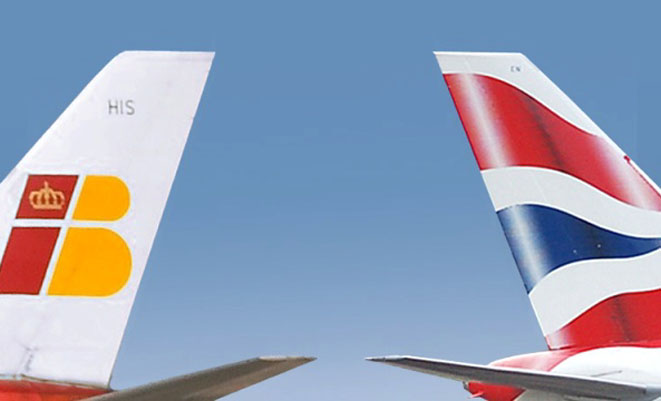IAG Cargo: open to opportunities
02 / 03 / 2015

FRESH from signing its block space programme on Qatar Airways freighters, IAG Cargo is prepared to “explore other opportunities” in terms of carrier partnerships.
Steve Gunning, chief executive of the British Airways and Iberia cargo arm, says that the deal with Qatar Airways – sharing five-weekly B777F flights from Hong Kong to Stansted – has already proved profitable after exiting the lease agreement with GSS for three B747-8Fs.
Says Gunning: “When you make a decision to take such a big chunk out of your capacity and change your proposition, there has to be a key driver and it was primarily a financial driver.
“We were not generating, but destroying value by continuing to run those [B747-8] freighters. What I can say in contrast, is that the programme with Qatar is profitable and is contribution positive. It has made a significant difference, the contribution year-on-year for the quarter is up significantly and the change in freighter programme is about a third of that improvement.”
There has been some media criticism of IAG Cargo’s second quarter results, with Gunning describing the numbers as “strong” when commercial revenue (flown revenue plus fuel surcharges) was €238m, a 12.2 per cent decline versus €271m for the same period last year. Volumes of 1,321m cargo tonne km for the quarter decreased by 5.1 per cent compared to Q2 2013, while capacity decreased by 5.6 per cent.
Adds Gunning: “The reality is that they are a difficult set of numbers to interpret because there is a lot of change and transition in the numbers. In Q2 we had our final month of the GSS freighter programme and then two months on the smaller but very significant Qatar capacity programme in May and June.
“As a result of the adjustment in our freighter propositions there was a reduction in our capacity of nine per cent year-on-year, a reduction in our volumes of 12 per cent and a reduction in revenue of €33 million.
“But if you step to one side and adjust for that change, then the reality is that the underlying revenue is flat year-on-year, despite an exchange negative of €11 million.”
IAG Cargo’s underlying the revenue figures were up four per cent, year-on-year, a seven per cent improvement in volumes and a one and a half point improvement in load factor and a two point drop in yield.
Says Gunning: “That was not so much due to price erosion but to a sector length mix. We are finding the average sector length in Q2 was much longer than we had seen in the previous like quarter, primarily because of high strong volumes out of Asia, going all the way across to North America.
“So when you look at it on a like for like basis, we think they are a strong and encouraging set of results that vindicate the decision we made with regard to exiting the GSS freighter programme, and entering into the large capacity programme with Qatar Airways.”
Asked whether the Qatar agreement is a model for similar deals or arrangements with other carriers, Gunning said: “Yes and certainly we are exploring other opportunities.”
He adds: “We have done some additional but much more modest capacity arrangements With Qatar Airways already, linking some India routes into the Middle East and in to Madrid as well. We are certainly exploring other opportunities.”
Gunning believes that the backdrop of the air cargo industry for the next few years will be excess capacity in the market.
Passenger businesses have been performing strongly over the last two years, with a consequent arrival of new generation aircraft in the global market with much larger cargo holds than those aircraft they replace.
Adds Gunning: “This big influx of cargo capacity is creating an excess supply and the only relief valve that the air cargo industry has is freighter capacity, because that is the only one they are fully in control of.
“As a result you will see the freighter [business] model coming under more and more pressure – I am not saying get rid of all the freighters because we need them in certain routings and products – but there will be a reduction in freighter capacity.
“There will be a need for more partnerships and collaborations for people to build global networks in an asset-light way.”
He cites the example of an IAG Cargo interline product with five carrier partners: “Historically, the interline product has been on a standby basis, which really does not work very effectively for our customers. So we created the Partner Plus interline product and signed up five carriers. We interline on each other’s metal, not on a standby basis but on a commercially booked basis. So those carriers and we can expand our networks without necessarily having more metal or more aircraft.”














